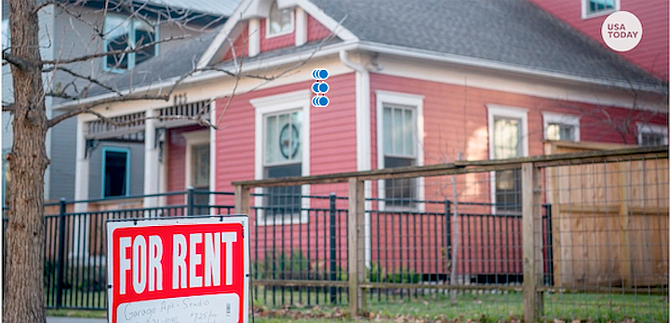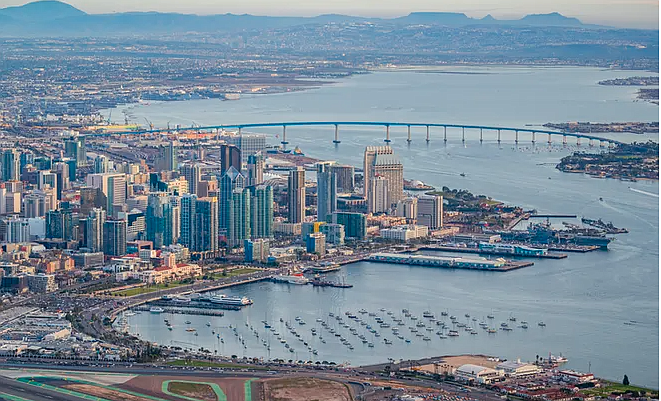 Facebook
Facebook
 X
X
 Instagram
Instagram
 TikTok
TikTok
 Youtube
Youtube

As the holidays near, San Diegans feel the financial crunch more than ever — some are part of a 1.6 million group moving across the border, and others are also part of a growing mobile group living in their cars.
In late October, according to USA Today, San Diego became the most expensive city to live in in the U.S.
America's Finest City topped the U.S. News and World Report’s 2023-2024 list — followed by Los Angeles, Honolulu and then Miami — via multiple metrics. The factors included the price of our gas and the inflation rate. Another factor is annual housing costs, in which San Diego's home prices exceed the national median sale price, $950,000 in October per Zillow, and the tacked-on fees associated with homeownership.
Then there's the median gross rental prices. Numbeo.com estimates that rent in San Diego plus living expenses costs over $4,400 monthly for a single person to live in a one-bedroom apartment.
Roommates and housemates help offset rent, mortgage, and accompanying bills and HOA fees. But some want their privacy. About 1.6 million Americans have reportedly pulled up stakes and relocated to Mexico.

The average cost of living in Mexico is 88 percent less than in the U.S., according to Expatistan. The comparison is "based on 29,642 prices entered by 3,497 different people." Nomadlist.com reported that to live in Tijuana, the cost of living for an expat is $1,417 per month; of that, a one-bedroom studio in the city averages $710 a month.
Many expats living in Baja, California, subscribe to the Talk Baja Facebook page, which has about 107,000 followers. It's a group where expats advise one another on moving into or traveling in Baja.
Ron Hoff, the Talk Baja group moderator, posted a graphic of the average cost of living expenses in Baja (based on a retired couple aged 60-69) in August. "I am trying to come up with an average cost of living guide for Baja," reads the caption in part, "understanding that it will be somewhat cheaper in some areas and a bit more expensive perhaps in others."
The list read in part: rent: unfurnished two-bedroom home, $800; electricity, $35; water, $30; internet, $25; healthcare (IMSS for a couple aged 60-69), $175; groceries, $400. The total was $2,525 for a month. While many expats said certain expenditures listed were low, others said the opposite.
Jack Smith, a local home painter, is considering moving from his San Diego home to Tijuana. "My friend, who is a U.S. citizen, said I can room with him," Smith explained to me. "He lives with other people in downtown Tijuana and spends $250 for rent and utilities [per month]. He has an EBT card, purchases groceries from here, and then crosses the food in a backpack; he spends about $160 a month on food. He has a storage unit in Chula Vista for $150. So, add on the MTS pass, and that's only about $600 a month.
Smith considered living out of his car. "I can get a $20 per month gym membership with showers and free WiFi," he estimated. "For groceries purchased at Grocery Outlet, I'd spend about $200 a month and buy as I go. Car maintenance and a put-aside repair fund is about $50 a month. Gas is about $200, and insurance is about $100. Then, I'd spend about $50 monthly for water at Starbucks to hang out in a living room-like area and network [for gigs] on my laptop. Starbucks is as close to a 'homey' feeling as possible." Living out of his car costs about $600 a month.
"It's a toss-up, as both prices are about the same," he concluded. "The risks are about the same. I don't know what's scarier, walking around Tijuana streets at night or parking on San Diego streets and avoiding detection from neighbors, police, and tweakers."


As the holidays near, San Diegans feel the financial crunch more than ever — some are part of a 1.6 million group moving across the border, and others are also part of a growing mobile group living in their cars.
In late October, according to USA Today, San Diego became the most expensive city to live in in the U.S.
America's Finest City topped the U.S. News and World Report’s 2023-2024 list — followed by Los Angeles, Honolulu and then Miami — via multiple metrics. The factors included the price of our gas and the inflation rate. Another factor is annual housing costs, in which San Diego's home prices exceed the national median sale price, $950,000 in October per Zillow, and the tacked-on fees associated with homeownership.
Then there's the median gross rental prices. Numbeo.com estimates that rent in San Diego plus living expenses costs over $4,400 monthly for a single person to live in a one-bedroom apartment.
Roommates and housemates help offset rent, mortgage, and accompanying bills and HOA fees. But some want their privacy. About 1.6 million Americans have reportedly pulled up stakes and relocated to Mexico.

The average cost of living in Mexico is 88 percent less than in the U.S., according to Expatistan. The comparison is "based on 29,642 prices entered by 3,497 different people." Nomadlist.com reported that to live in Tijuana, the cost of living for an expat is $1,417 per month; of that, a one-bedroom studio in the city averages $710 a month.
Many expats living in Baja, California, subscribe to the Talk Baja Facebook page, which has about 107,000 followers. It's a group where expats advise one another on moving into or traveling in Baja.
Ron Hoff, the Talk Baja group moderator, posted a graphic of the average cost of living expenses in Baja (based on a retired couple aged 60-69) in August. "I am trying to come up with an average cost of living guide for Baja," reads the caption in part, "understanding that it will be somewhat cheaper in some areas and a bit more expensive perhaps in others."
The list read in part: rent: unfurnished two-bedroom home, $800; electricity, $35; water, $30; internet, $25; healthcare (IMSS for a couple aged 60-69), $175; groceries, $400. The total was $2,525 for a month. While many expats said certain expenditures listed were low, others said the opposite.
Jack Smith, a local home painter, is considering moving from his San Diego home to Tijuana. "My friend, who is a U.S. citizen, said I can room with him," Smith explained to me. "He lives with other people in downtown Tijuana and spends $250 for rent and utilities [per month]. He has an EBT card, purchases groceries from here, and then crosses the food in a backpack; he spends about $160 a month on food. He has a storage unit in Chula Vista for $150. So, add on the MTS pass, and that's only about $600 a month.
Smith considered living out of his car. "I can get a $20 per month gym membership with showers and free WiFi," he estimated. "For groceries purchased at Grocery Outlet, I'd spend about $200 a month and buy as I go. Car maintenance and a put-aside repair fund is about $50 a month. Gas is about $200, and insurance is about $100. Then, I'd spend about $50 monthly for water at Starbucks to hang out in a living room-like area and network [for gigs] on my laptop. Starbucks is as close to a 'homey' feeling as possible." Living out of his car costs about $600 a month.
"It's a toss-up, as both prices are about the same," he concluded. "The risks are about the same. I don't know what's scarier, walking around Tijuana streets at night or parking on San Diego streets and avoiding detection from neighbors, police, and tweakers."
Comments